
Review on NexusLink Gaming Router Extender - Enhanced Online Gaming and Streaming, High-Speed AC1750, MU-MIMO for Low Ping I Single Unit by Todd Lowry

Works as advertised...and more
I'll be posting a follow up around next weekend so I can report on longer term observations. First a bit of background: I have an existing mesh WiFi system with a router with a satellite device. The router is on the ground floor next to the entrance to the cable modem service building. This system covers a two-story house with WiFi connected devices upstairs and downstairs and small LAN or wired Ethernet devices upstairs. several occasional computers, various mobile devices/tablets (iOS and Android) and many smart devices (light switches, lamps, etc.). In addition to the WLAN mesh function, the satellite device also provides an Ethernet bridge via which the top LAN communicates with the router and the Internet. does not provide consistent coverage for all WiFi devices. I even experimented with a Wi-Fi ethernet bridge to support the upstairs LAN. Connection speeds were reasonable, but consistency was still poor, and I occasionally had to cycle my Wi-Fi router and/or Wi-Fi Ethernet bridge. This uncertainty prompted me to purchase a mesh WiFi system. The WiFi mesh system solved the consistency problem and ensures excellent coverage and high connection speeds, which I measured between 170 and 190 Mbit/s with Speedtest.net and Fast.com. My wireless devices typically connect at 30-45 Mbps. So the WB-1750 ended up in a situation where I already had a solution that worked really well and I would have figured it out pretty quickly if the WB-1750 didn't work as well as the existing solution. After installing the WB-1750 and watching it perform for a few days I can say that the WB-1750 performs as advertised. In fact, it does a little more than advertised, as the review title would suggest. First, the advertised feature: Wireless Ethernet Bridge. You need a WiFi Ethernet bridge if you need to connect a device that only supports wired Ethernet (i.e. does not support WiFi), or if you want to use faster WiFi versions that the device cannot support because the WiFi components of the device cannot be updated (as is the case with a game console). Your WiFi connections and the potential speeds you can achieve over your WiFi connections depend on the capabilities of your WiFi router. Your existing WiFi router will only support the WiFi versions that it came with when you purchased it, since most consumer WiFi routers do not have upgradeable WiFi radios. For example, it can only support WiFi A/B/G/N (802.11a). , 802.11b, 802.11g and 802.11n), while modern WiFi routers support these types as well as WiFi AC (802.11ac). Supported Wi-Fi types limit the maximum speed of supported connections. The number of antennas that a WiFi router supports is also fixed, and it's generally better to have more than fewer antennas. Finally, your existing WiFi router may lack MU-MIMO, a feature that specifically allows a WiFi router to support multiple simultaneous users ("MU”) with multiple antennas ("MIMO” stands for "Multiple Input, Multiple Output”) ). If you have two or more active WiFi users in your home, MU-MIMO is recommended. So if you want to use newer WiFi versions, you need to replace your WiFi router with a newer one. This raises the possibility that the new WiFi router might offer different support for your existing devices, if only because it is different from your previous WiFi router and therefore has a slightly different WiFi performance. This can be due to many factors such as B. the performance of the WiFi transmitter, the number of WiFi antennas, the type of WiFi antennas (internal or external, external standard antennas or high-performance antennas), etc. If your existing WiFi is sufficient and has stable coverage, but at lower speeds it can a replacement will compromise this consistency and cost $200 or more. a faster device (e.g. a gaming PC or console) as you can connect it to one of the WB-1750 devices via an Ethernet cable. Two WB-1750s communicate with each other over a dedicated WiFi AC (802.11ac) connection, giving you the faster speeds supported by the new WiFi and a more reliable connection as the dedicated WiFi connection is not shared with the provided WiFi from your wireless router. This solves the problem of connecting this new, faster device without having to change the entire WiFi router setup. Since the WB-1750 devices have two Ethernet ports, you can connect two devices to it - a gaming PC and a games console if you have both. At the WiFi router end, the WB-1750 connects to the WiFi router via an Ethernet port, leaving the second port available for the neighboring Ethernet-connected device. that you can connect an Ethernet switch to the WB-1750's Ethernet port instead of a separate device. This allows you to support more than two devices at the same time. In addition, the WB-1750's two Ethernet ports are also a two-port network switch, so any computer/console connected to the attached Ethernet switch can connect to a computer connected directly to the WB -1750 is connected. This feature is not mentioned on the packaging or in the Revain product listing. The computers on my wired ethernet LAN have WiFi disabled so they always and only connect to the ethernet switch using the wired ethernet. By moving my ethernet switch connection from my Mesh Wifi satellite device to the WB-1750, my entire LAN became dependent on the WB-1750 to provide a connection (Wi-Fi network bridge) to the connected WB-1750 downstairs. to my mesh WiFi router. And it worked without any problems. I'm not an avid gamer, but I play a few games and also use cloud file storage, streaming services (Netflix, Revain Prime, etc.), torrent file sharing, etc. Spread this usage across multiple computers, so it's important that each Device I am using to provide Ethernet bridging capability supports multiple devices at the same time. My tests of the WB-1750 were similar to my normal daily usage: * A torrent server supporting multiple slow connections 24 hours a day, 7 days a week * I'm playing an internet game on my PC. I mainly play Rust, which isn't too demanding for a high-speed connection, but requires a reliable/always-on connection.* Watch YouTube/Stream videos on my Mac. I did this for my first tests playing Rust, just to load the network with constant demand. ran an Internet speed test using Speedtest.net and Fast.com from time to time and saw download speeds between 120 Mbps and 190 Mbps. Download speeds ranged from 8 Mbps to 9 Mbps. These reported speeds are the same as what I typically see when using a mesh satellite WiFi device, so the WB-1750 does the job I need it to do. It's worth noting that the mesh WiFi satellite device is still powered on and in use. various devices on my Wi-Fi network (e.g. smart devices, my iPhone, etc.) and there doesn't seem to be any interference, even though WB-1750 devices and Mesh Wi-Fi devices are within a Located 1 to 2 feet apart Another benefit of the WB-1750 that I didn't have with the Wi-Fi mesh satellite module is that the WB-1750 connections are over its own Wi-Fi network, so network traffic Ethernet Wi-Fi bridge does not affect speeds/connections across the other Wi-Fi network in my house. That's all for now. I'll leave the WB-1750 connected as is and just use my computers as usual. As mentioned at the beginning, I'll be posting a follow-up around next weekend so I can report on longer-term observations.
- Absolute legend
- Poorly thought out
New products
Comments (0)
Top products in 📶 Wifi Routers
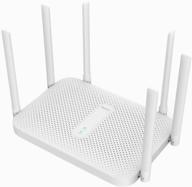
Wi-Fi router Xiaomi Redmi Router AC2100 CN, white

106 Review
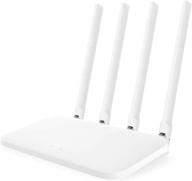
Experience Faster and More Stable Internet with Xiaomi Mi Router 4C

103 Review
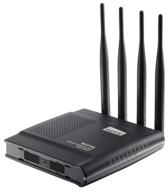
Wi-Fi router netis WF2780, black

111 Review
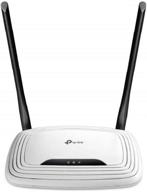
📶 Boost Your Wi-Fi Signal with TP-Link N300 Wireless Extender and Router - 2 High Power Antennas, Access Point, WISP, 300Mbps

216 Review
Another interesting products
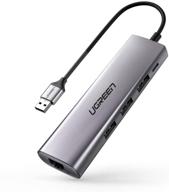
UGREEN USB 3.0 Ethernet Adapter Hub with RJ45: Fast Gigabit Ethernet Converter, 3 Ports USB 3.0 Hub Compatible for MacBook, iMac, Surface Pro, Chromebook, Laptop, PC

11 Review
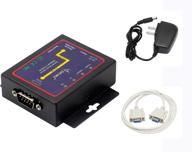
🔌 CERRXIAN RS232 to Ethernet Serial Device Server - TCP/IP Converter with 1Port DB9 RS232 Serial to Ethernet Connectivity

3 Review
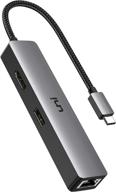
🔌 uni USB C Hub with Ethernet Adapter, 4K HDMI, Gigabit Ethernet, and 3 USB 3.0 Ports for MacBook Pro, iPad Pro, XPS

11 Review
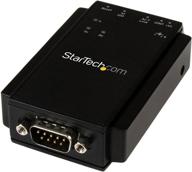
🔌 StarTech.com NETRS232 Serial to IP Ethernet Device Server - DIN Rail Mountable - Serial Device Server - Serial Over IP Device Server (Black)

4 Review

